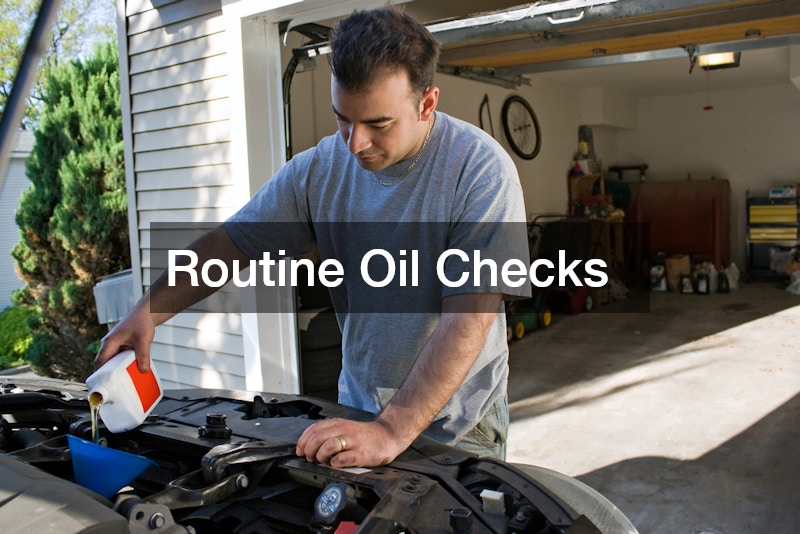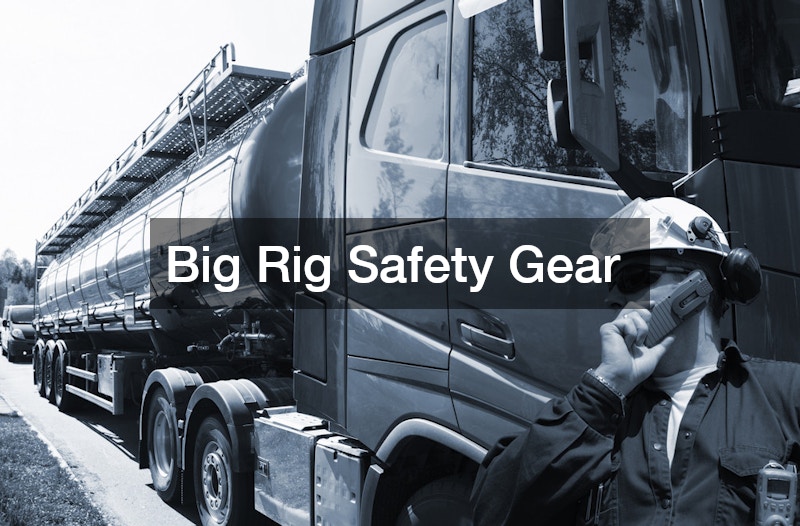When it comes to ensuring safety on the roads, investing in vehicle safety cannot be overemphasized. In today’s fast-paced world, vehicles are indispensable, making it crucial to focus on safety features that protect both the driver and passengers. From advanced technology integrated into vehicles to basic tools that ensure your roadside safety, being prepared is key. This article will take an extensive look at various categories of vehicle safety equipment that you should consider, enhancing your protection while driving or on the road.
Strong Windshield Tech
Advancements in windshield technology have significantly contributed to vehicle safety, making it a crucial area of focus for both manufacturers and users. A robust windshield not only protects passengers from debris and wind but also plays an integral role in the structural integrity of a vehicle. Modern technologies have enabled the production of impact-resistant glass that can withstand high levels of stress during a collision.
Auto glass repair companies emphasize the importance of a well-maintained windshield, insisting that any chips or cracks should be repaired immediately to prevent further damage. These repair specialists are equipped with tools and expertise that ensure your windshield maintains its strength and transparency, which are vital components of overall vehicle safety equipment. Regular checks and prompt repairs are advised for all drivers.
Incorporating windshield tech such as head-up displays (HUD) has further transformed safety paradigms, providing vital navigation and speed information in real-time directly on the windshield. This reduces the distraction of looking down at dashboards, keeping the driver’s eyes on the road. It’s a clear example of how vehicle safety equipment is adapting to new challenges, ensuring comprehensive protection for drivers and passengers.
Routine Oil Checks

Routine oil checks are often overlooked as a safety measure, yet they are pivotal to engine performance and durability. Clean engine oil ensures that your car runs smoothly, reduces wear and tear, and prevents overheating. Regular car oil change operations not only contribute to the efficient running of a vehicle but also prevent catastrophic engine failures that could double as road hazards.
Neglecting oil maintenance can have dire consequences, as it leads to increased friction within the engine components, threatening your vehicle’s overall health. As a vital aspect of your vehicle’s upkeep, routine oil checks form an essential part of vehicle safety that many drivers might not initially consider. It’s advisable to adhere to the manufacturer’s service schedule for oil changes to maintain peak vehicle performance.
Observing routine oil check intervals increases the reliability of your vehicle during long journeys and helps avoid costly repairs in the future. As vehicle safety equipment continues to evolve, adopting meticulous maintenance practices like regular oil changes remains fundamental. Such practices prevent unnecessary breakdowns that can leave drivers stranded, thus enhancing overall safety and reliability on the road.
Crash Safety Tools
Crash safety tools represent the defensive line between passengers and severe injury during a traffic incident. Modern vehicles are equipped with a variety of tools aimed at both preventing crashes and minimizing injury impacts if a collision occurs. These tools include airbags, seatbelts, crumple zones, and anti-lock braking systems (ABS), forming an intricate web of defenses against accidents.
In the aftermath of an accident, car accident attorneys often highlight the importance of these safety devices, as they can influence the legal outcomes and compensation in a case. Proper functioning of crash safety tools can be crucial in determining fault and liability, which underscores their role as indispensable vehicle safety equipment. Regular maintenance checks can ensure these systems remain operational and effective when needed.
The development of advanced safety features such as electronic stability control (ESC) and automatic emergency braking (AEB) has further enhanced crash prevention capabilities. These systems detect potential accidents before they occur, adjusting vehicle operation to prevent collisions. As vehicle safety evolves, driver assistance technologies continue to be a crucial focus area for manufacturers concerned with safety innovation.
Gear for Bikers

Motorcyclists face different challenges on the road, making specialized safety gear essential for their protection. Helmets, gloves, jackets, and boots are among the fundamental gear that significantly protects bikers during a fall or collision. Properly outfitting with these items can dramatically reduce the severity of injuries sustained in an accident.
A motorcycle accident attorney would often advocate for the use of high-quality, certified safety equipment, emphasizing how such gear can influence crash outcomes and legal proceedings. The law requires certain gear for bikers, but going above the minimum with advanced protective gear should be a priority for every rider. Safety gear forms an essential subset of vehicle safety equipment for two-wheel enthusiasts.
More advanced gear options include airbag vests and jackets, which offer superior protection by inflating upon impact, mimicking similar technology used in car airbag systems. These advancements represent a growing sector of vehicle safety specifically designed for bikers, providing critical protection against potential accidents and ensuring a safer riding experience.
First Aid Must-Haves
Every vehicle should be equipped with a comprehensive first aid kit as part of its standard safety equipment. A first aid kit can be a lifesaver, allowing you to address minor injuries while on the go until professional medical help is available. Essential items include bandages, antiseptic wipes, gauze, adhesive tape, scissors, and an emergency blanket.
In scenarios where urgent care is required, the presence of a well-stocked first aid kit can be crucial. Having the ability to administer initial treatment can prevent complications and provide comfort during an emergency. This makes first-aid equipment a vital component of vehicle safety equipment, offering immediate solutions for minor medical issues encountered on the road.
Supplementary to the typical contents, newer kits might also include additional items such as pain relievers, instant cold packs, and burn creams, making them more versatile and comprehensive. Regardless of experience on the road, every driver should prioritize a regularly updated first aid kit, reinforcing overall safety preparedness and enabling them to handle unexpected situations effectively.
Emergency Road Gear

Having emergency road gear readily available in your vehicle is vital for tackling any unforeseen breakdowns or adverse conditions you might encounter on the road. Tools like jumper cables, flashlights, reflective triangles, and tire-changing equipment are crucial components of vehicle safety equipment. They empower drivers to manage situations independently, ensuring a quicker, safer return to their journeys.
When unexpected incidents occur, wrecker services might not always be immediately available, making self-reliance an important aspect of road safety. Being prepared with the right emergency gear minimizes your vulnerability and reduces the time spent waiting for help. Regularly inspecting and maintaining these tools ensures they’re ready for use when needed.
Subtler elements of emergency gear include water bottles, blankets, and non-perishable snacks that can be lifesaving during prolonged waiting periods. As vehicle safety equipment continues to evolve, comprehensive emergency road gear kits have increasingly become a top recommendation for all drivers, aiming to enhance both safety and convenience during emergencies.
On-Road Safety Kits
On-road safety kits are tailored to support a driver’s needs during vehicular incidents, ensuring they have access to vital tools and resources. These kits often contain first aid supplies, vehicle repair tools, and essential personal items. They help drivers feel more secure and prepared when embarking on long trips or commuting daily.
In instances where towing services are needed, having an on-road safety kit can provide interim relief and control over the situation until professional help arrives. Ensuring that kits are well-stocked and periodically checked is crucial, as expired or depleted supplies can diminish their effectiveness in emergencies. They are an extension of vehicle safety equipment that prioritizes all-around preparedness.
Enhancing these kits by including portable phone chargers, maps, and emergency contact information can offer even greater utility during crisis incidents. Maintaining your on-road safety kit at a high standard highlights a commitment to responding efficiently in unforeseen circumstances, representing a key component of comprehensive road safety strategies.
Big Rig Safety Gear

Heavy-duty vehicles require specialized safety gear due to their size and the nature of their operations. Big rig safety gear includes reflective strips, air horn systems, wheel chocks, and blind spot mirrors, all of which contribute significantly to road safety for these mammoth machines. Ensuring that these items are properly maintained and functional is imperative to protect both the truck and other road users.
Truck delivery service operators are particularly reliant on their safety gear, as these large vehicles present unique risks in terms of clearance, weight distribution, and stopping distances. Accidents involving big rigs can be devastating, which is why focused attention on vehicle safety equipment for these trucks is critical, embodying a proactive safety culture within the commercial transport sector.
Innovations in big rig safety gear include connected technologies that offer tire pressure monitoring and GPS tracking, providing drivers with real-time feedback on their vehicle’s performance. As road safety technology advances, the integration of these tools into big rigs has become increasingly essential, ensuring they meet the most rigorous safety standards while safeguarding roads against potential mishaps.
Winter Driving Tools
Winter presents a unique set of challenges to drivers, requiring specialized equipment to ensure safety during these months. From snow chains to anti-freeze solutions, having the right winter driving tools can mitigate the increased risks posed by snow and ice-covered roads. Equipping your vehicle with these cold-weather necessities ensures maximum safety during treacherous winter conditions.
For regions that experience heavy snowfall, employing a snowplow or snow shovel can be extremely beneficial in maintaining clear, passable routes. These tools contribute to a broader category of vehicle safety equipment designed to keep vehicles operational and safe during the harshest conditions. Failing to adequately prepare for winter could result in hazardous situations that compromise safety.
Safety measures also include heated mirrors and seats, defrost systems, and high-intensity headlamps that enhance visibility during snowstorms or foggy conditions. As vehicle safety equipment becomes more comprehensive, the inclusion of winter-specific tools has become integral to maintaining safety standards, ensuring drivers remain prepared for the seasonal hazards on their journeys.
Fleet Safety Tech
Fleet safety technology has evolved to address the unique needs of managing multiple vehicles effectively and safely. Companies that engage in truck fleet management have adopted various sophisticated technologies, such as telematics, GPS tracking, and driver behavior analytics, all of which bolster the safety standards across their fleets. These advancements help in the reduction of accidents and improve overall operational efficiency.
The strategic implementation of these technologies allows for real-time monitoring of vehicles, enabling immediate responses to road incidents and ensuring compliance with safety regulations. As a core element of vehicle safety equipment, these digital tools serve as both preventative and managerial devices that enhance safety protocols for fleet operators significantly.
Further innovation in fleet safety tech includes automation systems capable of taking control in hazardous conditions, thereby minimizing human error and associated risks. The continual growth of these technologies signifies an ongoing transformation in vehicle safety equipment, reflecting its critical role in shaping industry standards and practices aimed at safer transit routes and operational best practices.
The essential categories of vehicle safety equipment discussed in this article demonstrate the impressive range of tools and technologies available to ensure safety on the roads. By investing in these resources, individuals and companies alike can significantly mitigate risks, enhance the functionality and durability of their vehicles, and most importantly, protect the lives of all road users. Whether through cutting-edge technologies such as windshield displays or foundational gear like first aid kits, the importance of being well-prepared cannot be overstated.
As automotive and safety technology continue to evolve, staying informed and up-to-date is vital for both personal vehicles and commercial fleets. Making thoughtful decisions about integrating these various vehicle safety equipment options into your everyday travel strategies fosters a safer and more reliable transportation experience. Always remember: safety is not a destination but a continuous journey requiring adequate preparation, regular maintenance, and a commitment to best practices on and off the road.
Through considering and incorporating the vehicle safety equipment detailed in this article, you will be better equipped to handle the challenges the roads may present. The overall goal is to ensure that every journey, whether a short commute or a lengthy haul, is as safe and secure as possible, reflecting the paramount importance of safety in our everyday vehicular operations.
